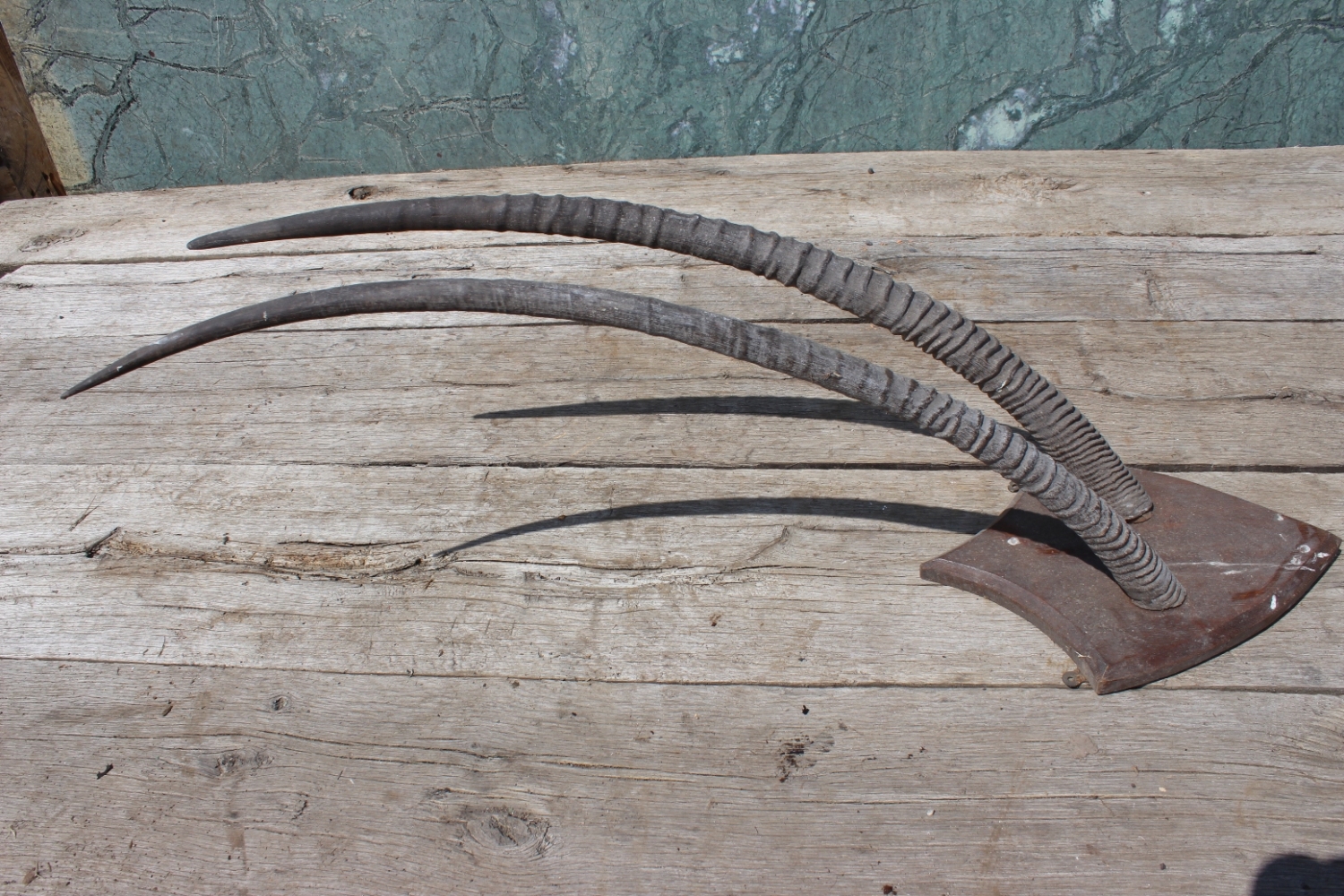Well looks like there is some disagreement going on, which I have no part of.
I've whittled out a few bows in the past and I'm here to learn as much as possible.
That said awhile back I ran across an excerpt from a historians paper on ancient bows. He mentioned a African/Egyptian bow made from two horns spliced at the middle by a wooden grip.
Yesterday I ran across this image.

I'm figuring a sturdy grip with tapered ends might work to join these horns, which I believe are hollow for several inches at least.
I suspect these long narrow horns would take to being soaked and bent very nicely to get a proper recurved shape.
Don't know the size of this species but there are or were several very large species of antelope with extremely long horns, some very straight.
No doubt African trophy horns of any sort are getting harder to come by but antique sets show up now and then grandfathered in.
I remember a scene in a very old sand and sandal film, can't remember which one, where preparing for a war Greek craftsmen were placing soaked rams horn bows on drying racks with pins similar to belaying pins to give them a recurve shape. How historically accurate that might have been is anybody's guess.
It occurred to me then that the horns must have been spliced at the grips in some manner.
Glue should hold it well enough but the tension of the string itself can hold a modern light takedown bow together.